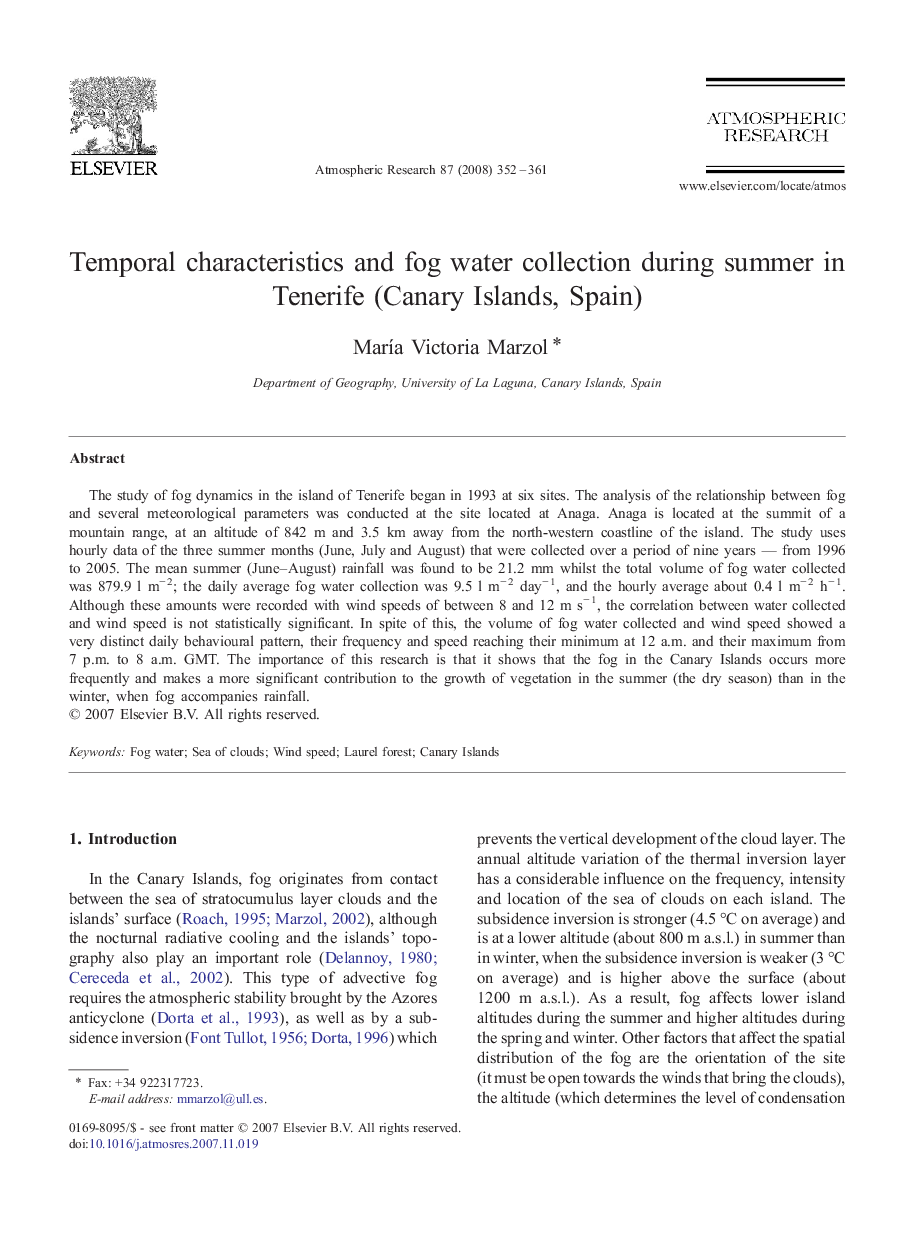| Article ID | Journal | Published Year | Pages | File Type |
|---|---|---|---|---|
| 4451185 | Atmospheric Research | 2008 | 10 Pages |
The study of fog dynamics in the island of Tenerife began in 1993 at six sites. The analysis of the relationship between fog and several meteorological parameters was conducted at the site located at Anaga. Anaga is located at the summit of a mountain range, at an altitude of 842 m and 3.5 km away from the north-western coastline of the island. The study uses hourly data of the three summer months (June, July and August) that were collected over a period of nine years — from 1996 to 2005. The mean summer (June–August) rainfall was found to be 21.2 mm whilst the total volume of fog water collected was 879.9 l m− 2; the daily average fog water collection was 9.5 l m− 2 day− 1, and the hourly average about 0.4 l m− 2 h− 1. Although these amounts were recorded with wind speeds of between 8 and 12 m s− 1, the correlation between water collected and wind speed is not statistically significant. In spite of this, the volume of fog water collected and wind speed showed a very distinct daily behavioural pattern, their frequency and speed reaching their minimum at 12 a.m. and their maximum from 7 p.m. to 8 a.m. GMT. The importance of this research is that it shows that the fog in the Canary Islands occurs more frequently and makes a more significant contribution to the growth of vegetation in the summer (the dry season) than in the winter, when fog accompanies rainfall.
